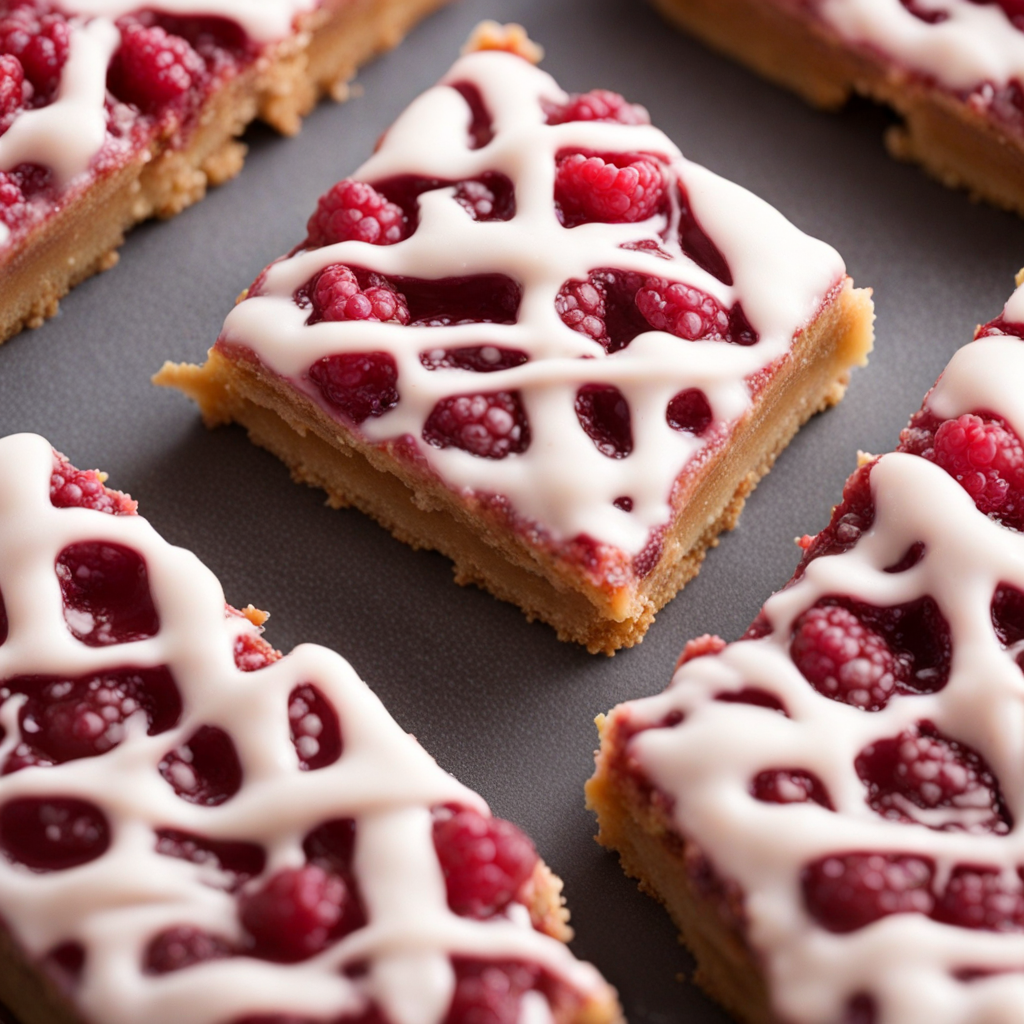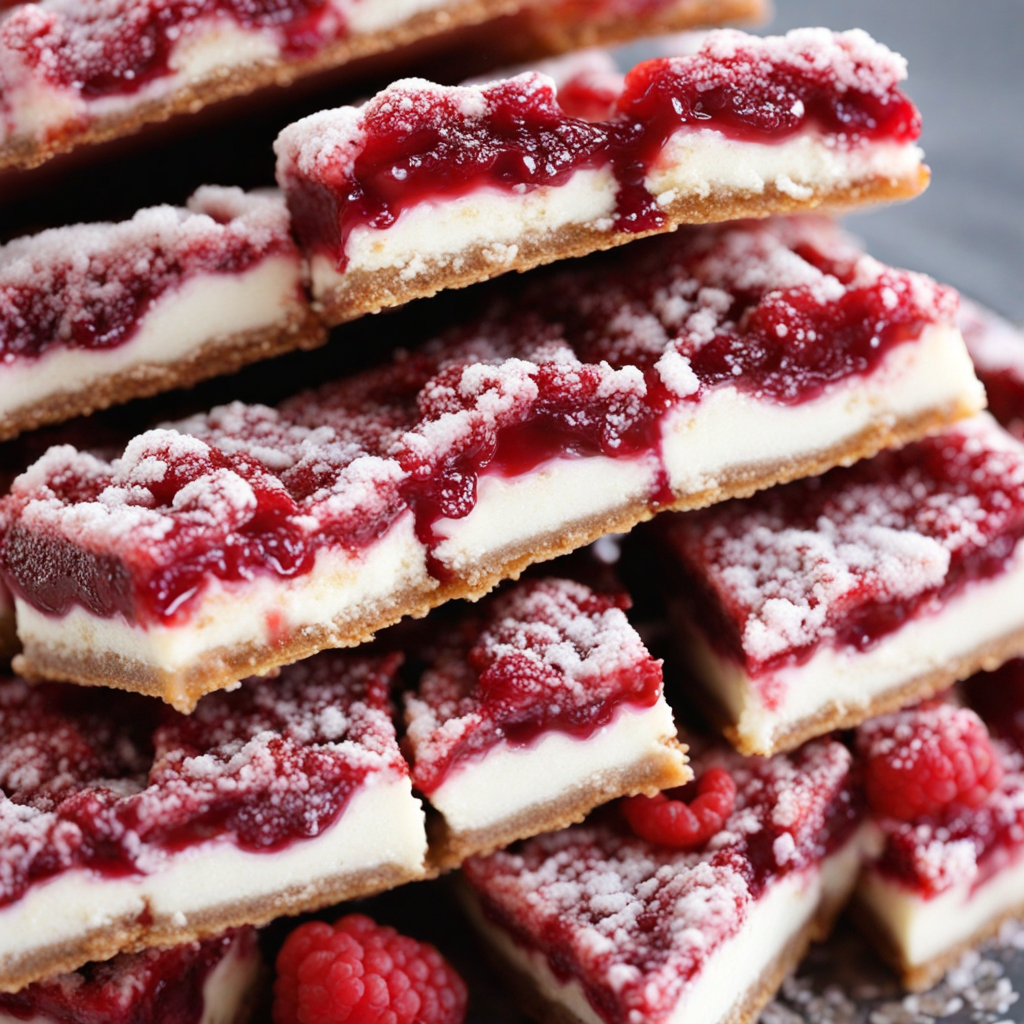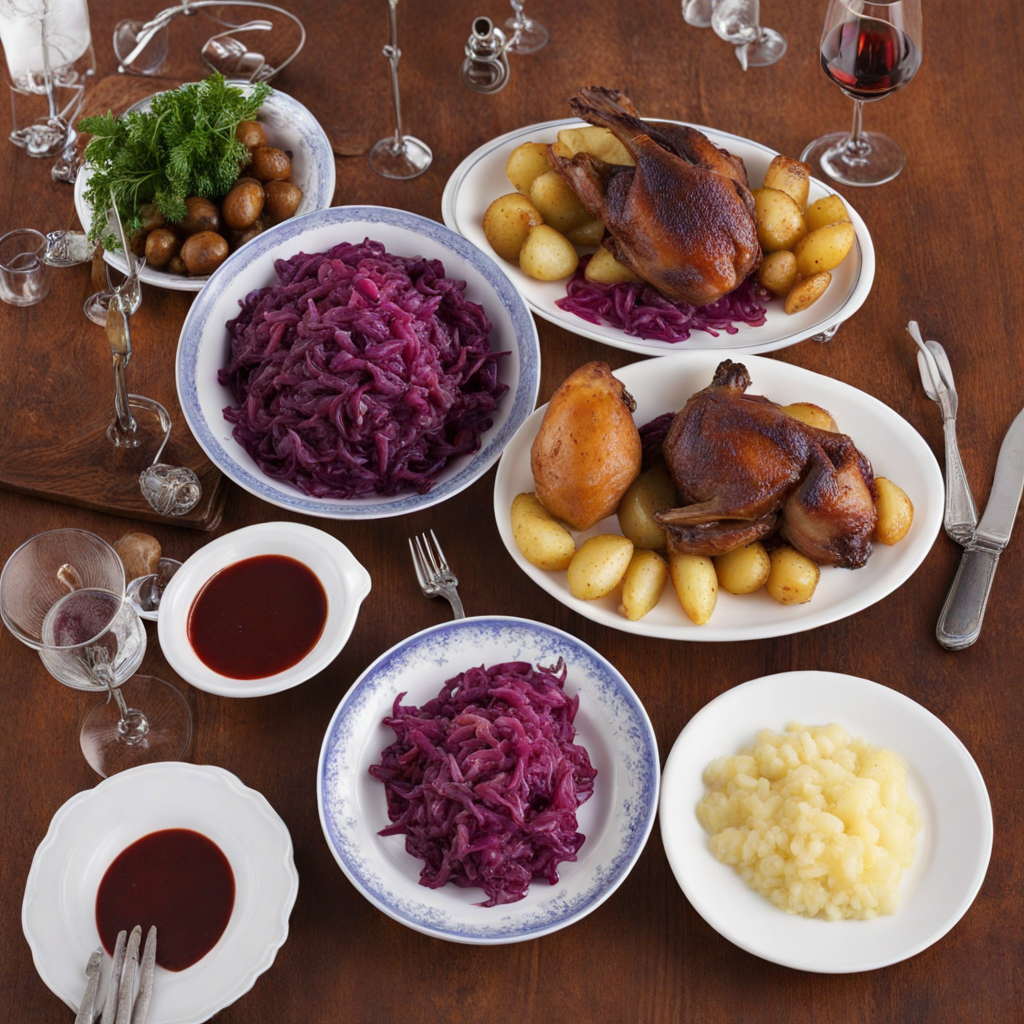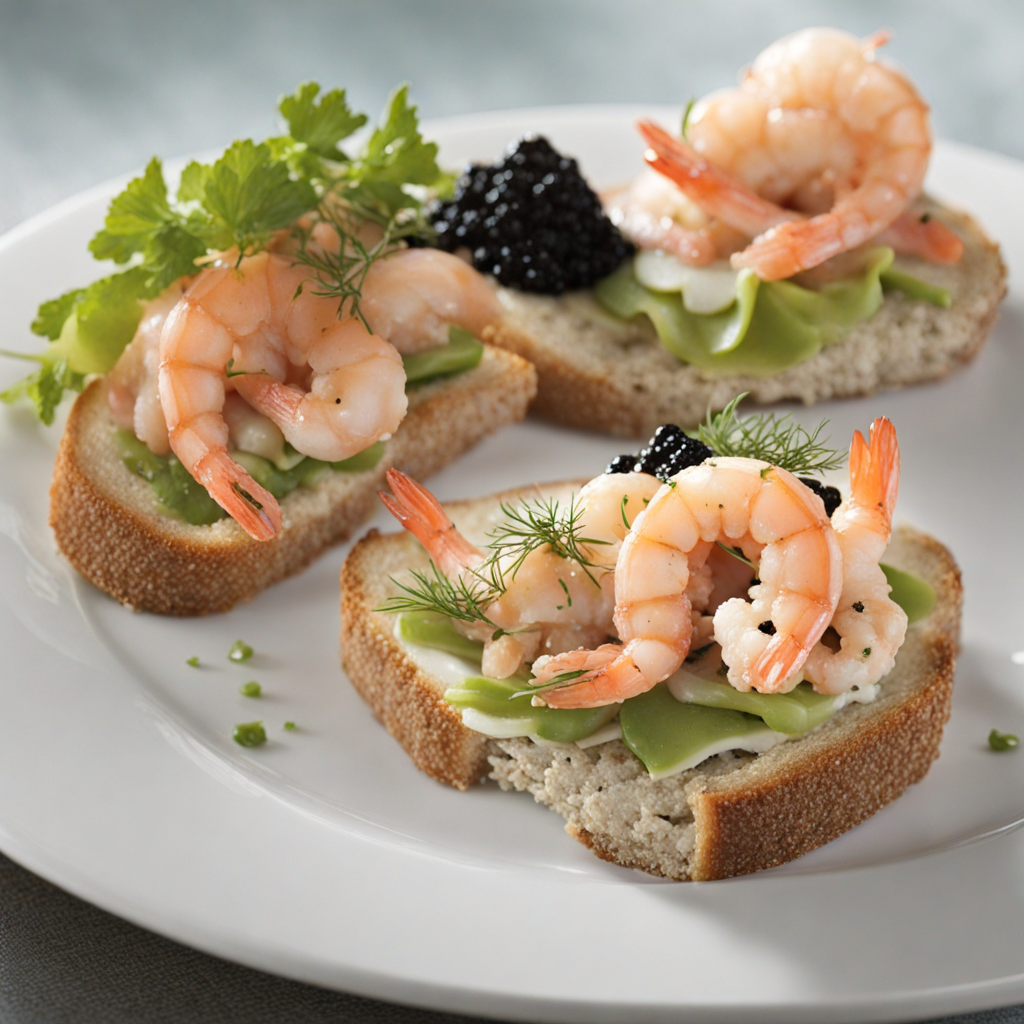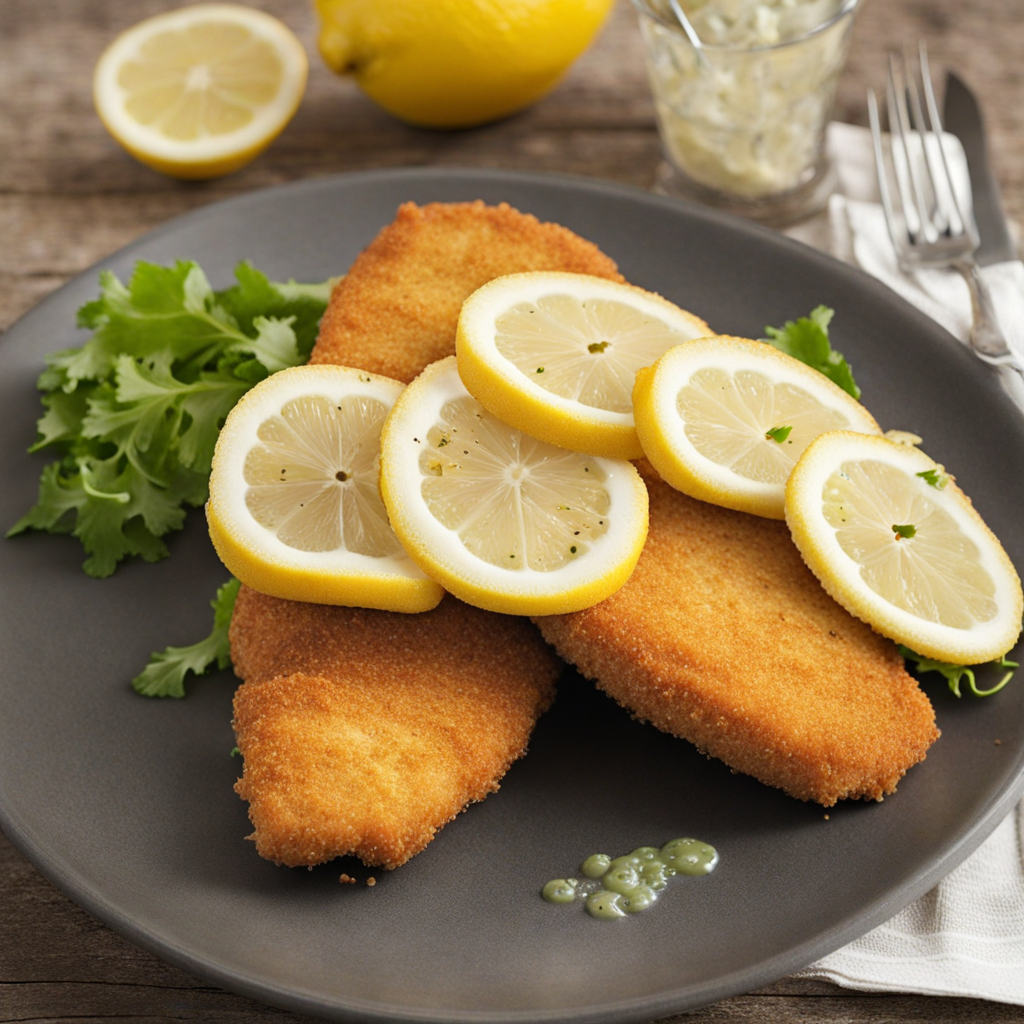Hindbærsnitter
Hindbærsnitter, a delightful Danish treat, is a charming pastry that combines the rich flavors of buttery shortcrust with the tartness of raspberries. This dessert typically features a base of crisp, golden dough, which is rolled out and layered with a luscious raspberry filling that offers a burst of fruity flavor. The sweet-tart balance of the raspberries complements the buttery notes of the pastry, creating a harmonious flavor profile that is both satisfying and refreshing. Each bite delivers a delightful crunch followed by a juicy explosion, making it a perfect accompaniment to a cup of coffee or tea. These enchanting pastries are often cut into rectangular shapes and generously dusted with powdered sugar, which adds an elegant touch to their appearance. The traditional presentation showcases the beautiful contrast between the golden crust and the vibrant raspberry filling, making them as visually appealing as they are delicious. Hindbærsnitter are commonly enjoyed during festive occasions, family gatherings, or simply as a delightful afternoon snack, embodying the warmth and comfort of Danish home baking. While Hindbærsnitter may be simple in their composition, their flavors are anything but ordinary. The combination of the flaky pastry and the tangy raspberry filling creates an unforgettable experience for the palate. As you savor each piece, you will appreciate the craftsmanship that goes into making these treats, as well as their deep-rooted place in Danish culinary tradition. Whether you’re a fan of fruity desserts or looking to explore something new, Hindbærsnitter is sure to leave a lasting impression with its delightful taste and texture.
How It Became This Dish
The History of Hindbærsnitter: A Sweet Slice of Danish Culture Hindbærsnitter, a beloved pastry from Denmark, is more than just a treat; it is a symbol of Danish culinary tradition, childhood memories, and the communal spirit of enjoying good food. This delightful dessert, often described as raspberry squares or raspberry slices, consists of a buttery shortcrust pastry layered with tart raspberry jam and topped with a sweet icing. Its history is intertwined with Denmark’s agricultural practices, social customs, and evolving tastes. Origins The precise origins of Hindbærsnitter are somewhat murky, as is the case with many traditional foods that have been passed down through generations. However, the recipe is believed to have evolved from the broader category of Scandinavian baked goods, which often feature simple, wholesome ingredients like flour, butter, sugar, and fruit preserves. The use of raspberries, which flourish in Denmark's temperate climate, made them a natural choice for this pastry. The name "Hindbærsnitter" can be broken down into two parts: "hindbær," meaning raspberry, and "snitter," which translates to slices or cuts. This name reflects the pastry's characteristic square or rectangular shape and highlights the primary flavor that defines it—the tartness of raspberries. The use of seasonal fruits in baking has long been a tradition in Denmark, allowing households to make the most of their harvest. Cultural Significance In Denmark, Hindbærsnitter is more than just a pastry; it represents a particular sociocultural ethos. The act of baking and sharing food has always played a crucial role in Danish society, fostering connections among families and communities. Hindbærsnitter is often found at celebrations, from birthdays to holidays, and it holds a special place in the hearts of many Danes who associate it with their childhood. The pastry is typically enjoyed with coffee, making it a popular choice in cafés and homes alike. The ritual of "kaffepause," or coffee break, is an important aspect of Danish culture, providing a moment to pause in the day and connect with others over a sweet treat. Hindbærsnitter, with its bright colors and delightful flavor, fits perfectly into this tradition, making it a staple in both informal gatherings and festive occasions. Development Over Time As with many traditional foods, Hindbærsnitter has evolved over the years, reflecting changes in Danish society, agriculture, and culinary practices. In the early 20th century, when many Danish households were primarily agrarian, the use of seasonal fruits in baking was commonplace. Recipes for Hindbærsnitter were likely passed down orally, with families adding their unique twists, leading to variations in the type of jam used, the thickness of the pastry, and even the icing. The mid-20th century saw a shift in food production and consumption patterns in Denmark, driven by industrialization and urbanization. The availability of processed foods changed the landscape of baking, allowing for easier and quicker preparation of treats like Hindbærsnitter. While some traditionalists may have preferred homemade versions, the convenience of store-bought pastries made Hindbærsnitter accessible to a broader population. In recent years, there has been a resurgence of interest in traditional Danish baking, fueled by a global trend towards artisanal and homemade foods. Young bakers and food enthusiasts have begun to experiment with the classic recipe, incorporating modern techniques and flavors. Variations of Hindbærsnitter now include different types of fruit preserves, gluten-free options, and even vegan alternatives, demonstrating the pastry's adaptability and enduring popularity. Hindbærsnitter in Modern Danish Cuisine Today, Hindbærsnitter remains a quintessential part of Danish pastry culture. It can be found in bakeries across the country and is often a highlight at festive occasions such as Christmas, where it might be served alongside other traditional treats like pebernødder (spiced cookies) and kringle (a buttery pastry). The aesthetic appeal of Hindbærsnitter, with its vivid raspberry filling and glossy icing, makes it a favorite for both home bakers and professional pastry chefs. Moreover, the rise of social media has played a significant role in promoting Hindbærsnitter beyond Denmark's borders. Food bloggers and influencers showcase their versions of this classic pastry, sharing recipes and tips that inspire a global audience to try their hand at making it. This has not only led to an international appreciation for Hindbærsnitter but has also encouraged a revival of interest in Danish baking traditions. Conclusion Hindbærsnitter is not merely a pastry; it is a reflection of Danish culture, history, and resilience. From its humble origins rooted in seasonal cooking to its place in contemporary culinary conversations, this delightful dessert tells the story of a nation that values simplicity, quality ingredients, and the joy of sharing food with others. As Denmark continues to embrace its culinary heritage while innovating for the future, Hindbærsnitter remains a delicious reminder of the past, present, and future of Danish cuisine. Whether enjoyed with friends over coffee or savored alone with a cup of tea, Hindbærsnitter is a sweet slice of Danish history that delights the senses and warms the heart.
You may like
Discover local flavors from Denmark


